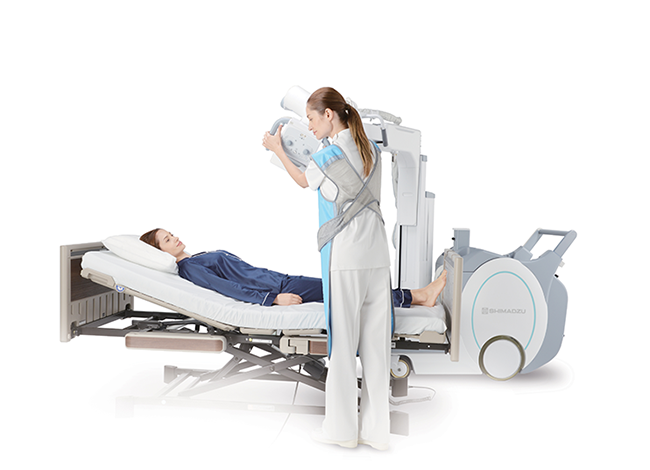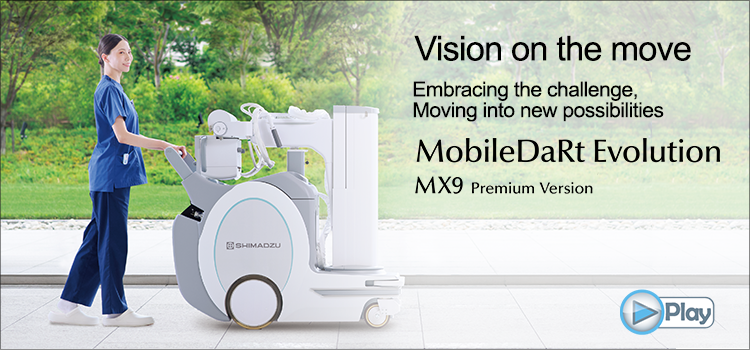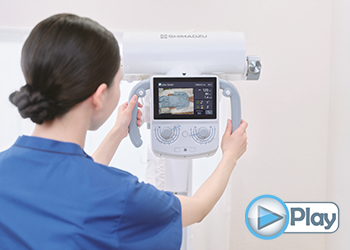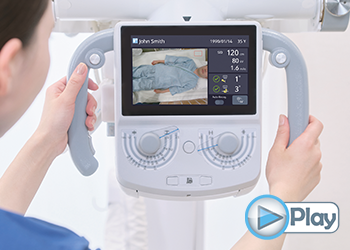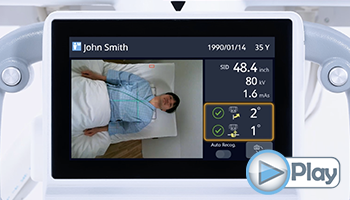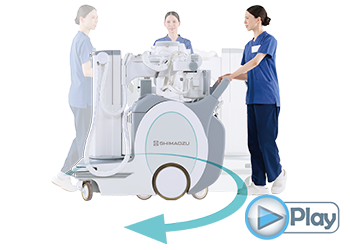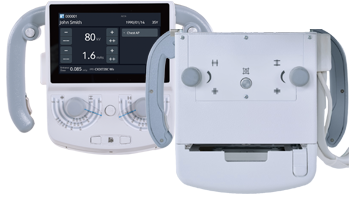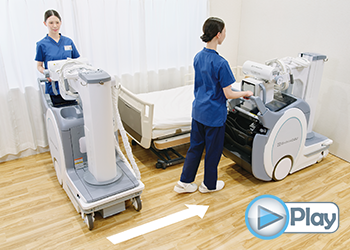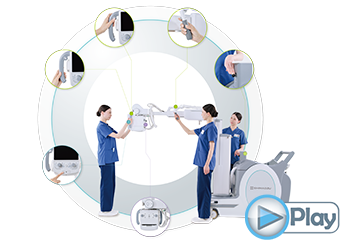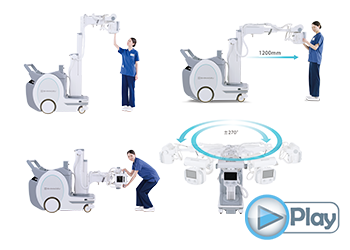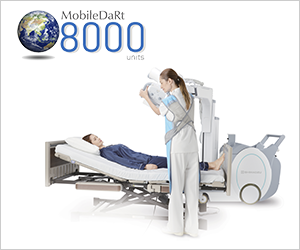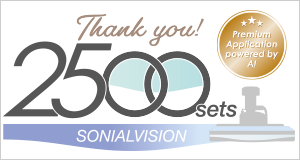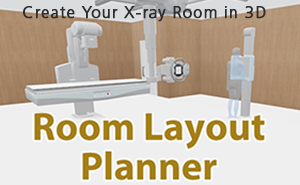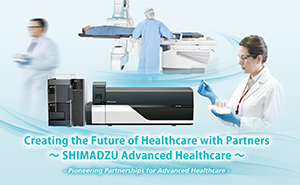Shimadzu's Digital Radiographic Mobile X-ray system with flat panel detectors, has exceeded 8,000 units sold worldwide, as of January 2025.
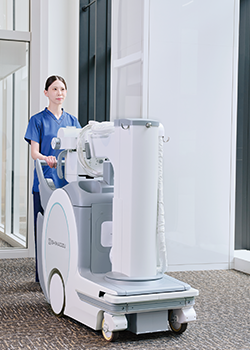
The award winning MobileDaRt Evolution is further refined into the MX9 Version featuring the collapsible column with advanced integrated tube head display and 3D in collimator camera.
Capitalising on the merits of efficiency and high throughput, the MobileDaRt Evolution MX9 equipped with the latest glass free wireless flat panel detectors, broadens its applications from clinical rounds in hospitals to critical care, applications at disaster sites, as well as operating rooms and neonatal intensive care units (NICU).
The MobileDaRt MX9 is available in 3 variations:
- • Premium Vision – Includes Second Display and 3D Camera.
- • Premium – Includes Second Display.
- • Standard.
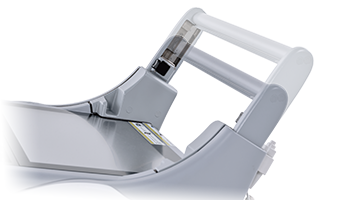 The handle height can be adjusted at any time based on the operator's comfort level and preference.
The handle height can be adjusted at any time based on the operator's comfort level and preference.
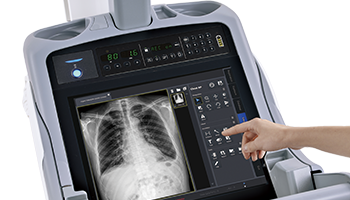 The large 19-inch colour touch panel display provides an intuitive user interface and is excellent for quickly viewing images, while the flat screen design makes it easy to clean-up.
The large 19-inch colour touch panel display provides an intuitive user interface and is excellent for quickly viewing images, while the flat screen design makes it easy to clean-up.
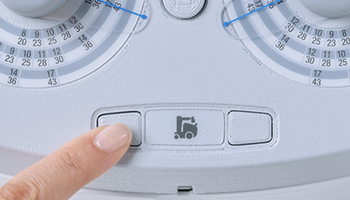 The main unit can be moved forward or backward with switches conveniently located on the collimator. The technologist can adjust positioning more precisely without moving around the patient bed.
The main unit can be moved forward or backward with switches conveniently located on the collimator. The technologist can adjust positioning more precisely without moving around the patient bed.
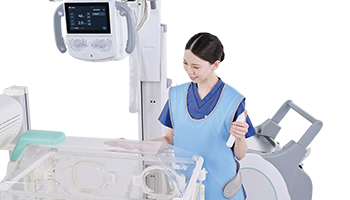 The compact Flat Panel Detector fits inside the cassette tray of Humidicribs, enabling easy imaging in NICU.
The compact Flat Panel Detector fits inside the cassette tray of Humidicribs, enabling easy imaging in NICU.
The high sensitivity Flat Panel Detector and advanced image processing helps reducing patient dose and the ability to capture images quickly provides excellent neonatal and paediatric care.
The high-power X-ray generator ensures the shortest possible exposure times, avoiding the possibility of blurred images and the need to repeat exposures. Gridless image processing provides even further dose saving, removing the need to use a grid while imaging.
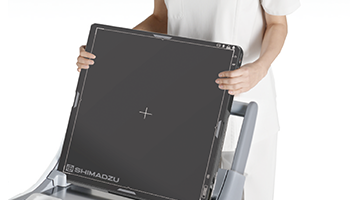 For your daily use, extra storage spaces are provided to store wipes, pens, markers, etc.
For your daily use, extra storage spaces are provided to store wipes, pens, markers, etc.
Grooves are provided for holding the Flat Panel Detector vertically while putting a sterile cover on the plate.
Wireless capability means the system can be used for a variety of applications, from scheduling examinations to physicians interpreting images and diagnosing conditions in routine patient rounds, ICUs, NICUs, emergency rooms, operating rooms, etc.
